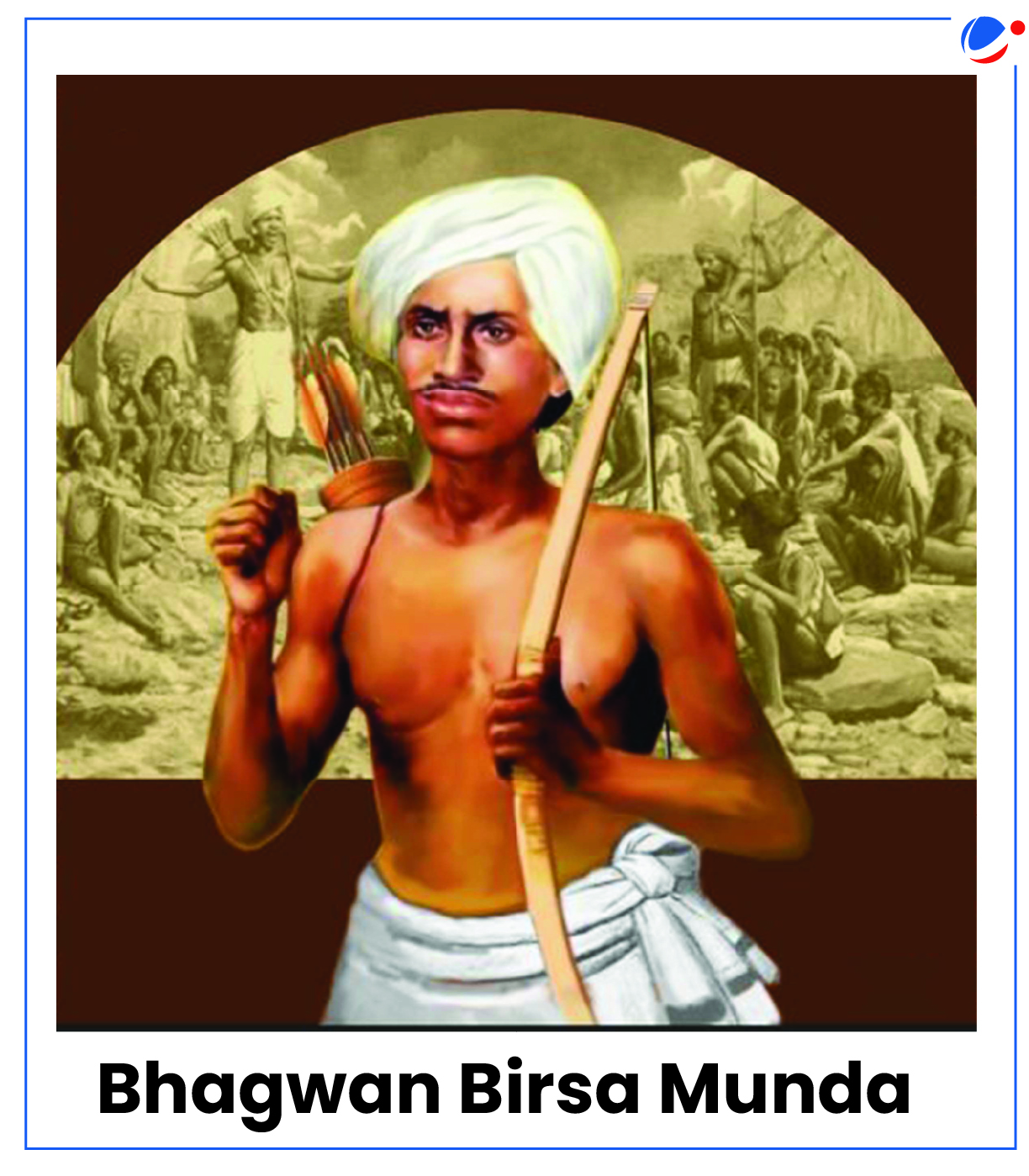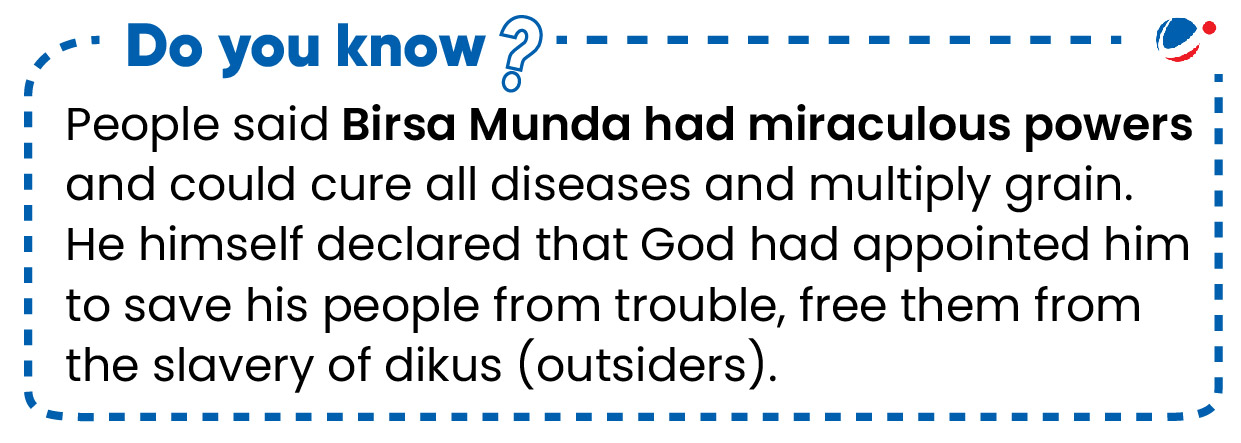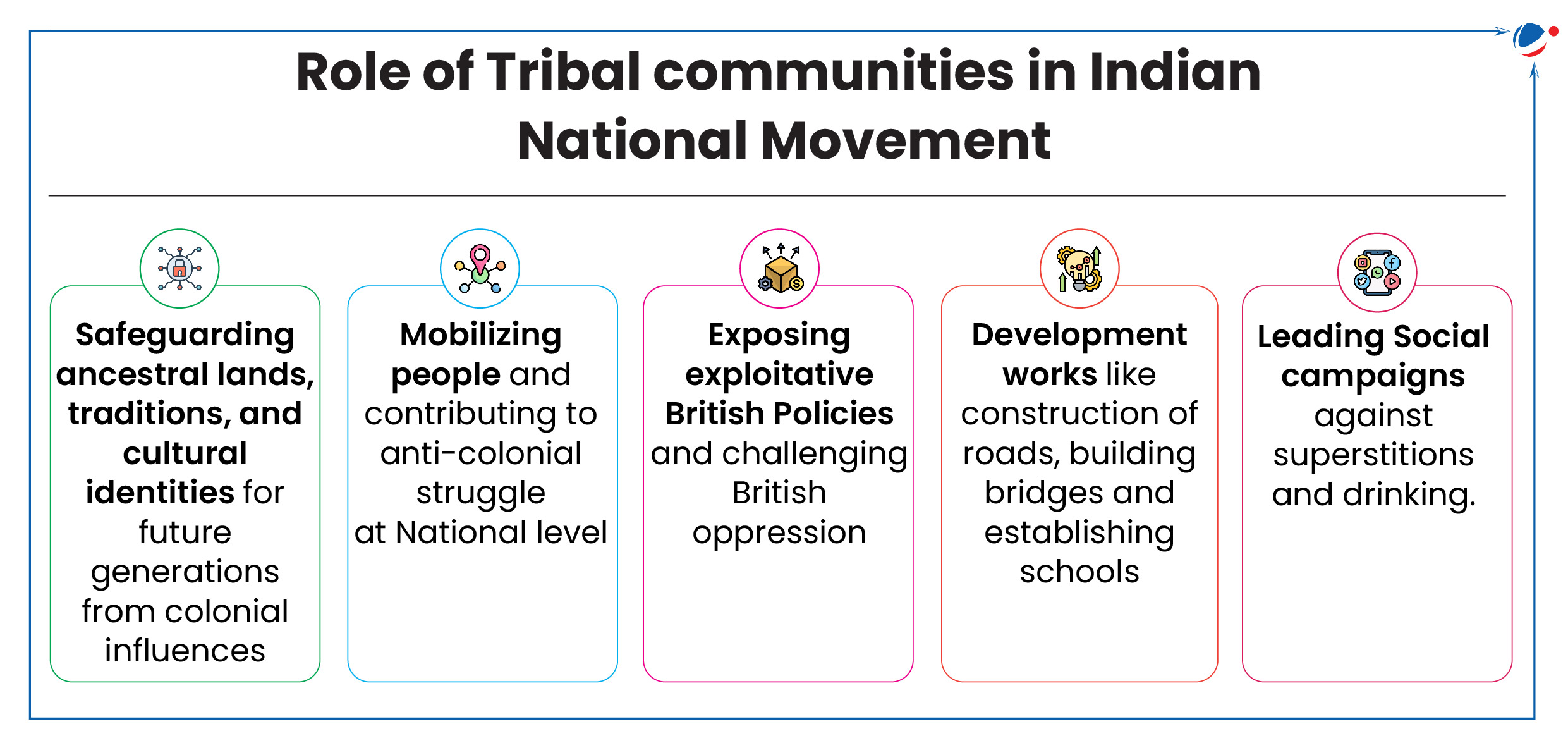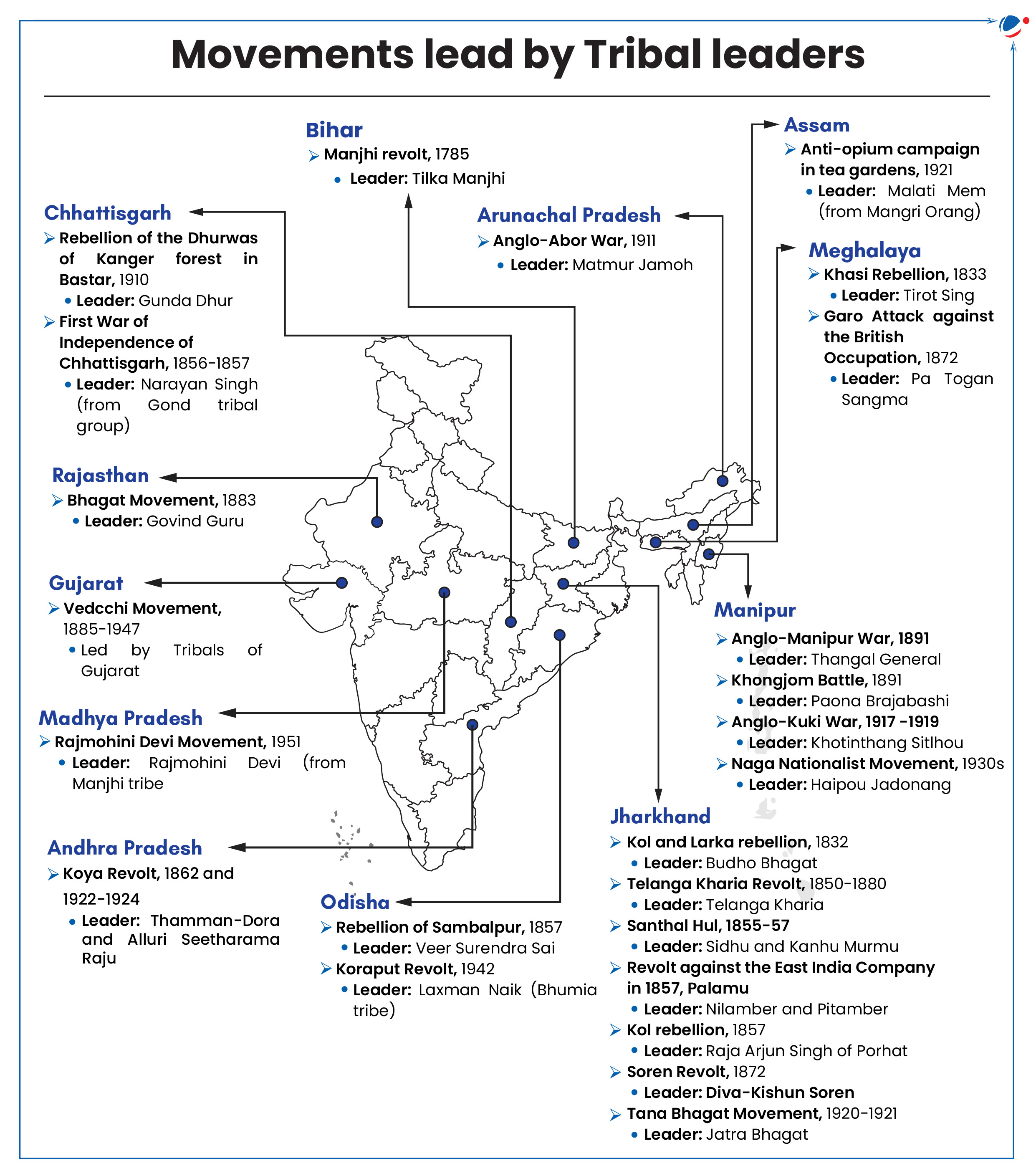Why in News?
Janjatiya Gaurav Divas was celebrated pan-India, marking the 150th birth anniversary of Bhagwan Birsa Munda.
More about the News
- Indian government declared 15th November as Janjatiya Gaurav Divas during the Azadi Ka Amrit Mahotsav in 2021.
- It marks the birth anniversary of Bhagwan Birsa Munda and honors the contributions of tribal communities, especially in India's freedom struggle.
- Key developments during the celebrations:
- Organized special events, celebrations etc. in Chhattisgarh named "Maati Ke Veer Padyatra" alongside "My Bharat Youth Volunteers".
- Commemorative coin and postal stamp in honor of Bhagwan Birsa Munda.
- Inaugurated and laid the foundation stone for development projects worth over 6640 crores, aimed at uplifting life of tribal communities under schemes like Pradhan Mantri Janjati Adivasi Nyaya Maha Abhiyan (PM-JANMAN), Van Dhan Vikas Kendras (VDVKs) etc.
About Pradhan Mantri Janjati Adivasi Nyaya Maha Abhiyan (PM-JANMAN)
|

About Birsa Munda
- Early life
- Born in Ulihatu Khunti district, Jharkhand in 1875 with birth name Daud Munda.
- Belonged to the Munda tribe of the Chhotanagpur plateau area, present day Jharkhand.
- He spent some time in the company of a prominent Vaishnav preacher Anand Panre.
- His Contributions:
- Founded a new sect known as the Birsait.
- It believed in one God, and aimed for reforming tribal society by observing a code of conduct.
- Took up a campaign against alcoholism, witchcraft and sorcery and promoted among people awareness about cleanliness.
- Educated the tribal's about British atrocities and made them aware of their culture and heritage regarding community ownership of land.
- Provided leadership to Munda rebellion also known as the "Ulgulan (Great Tumult) movement.
- Founded a new sect known as the Birsait.
- Because of his contributions to the Munda tribe, he is remembered as Bhagwan (God) and was given the title of Dharti Aaba (Father of Earth).

About Munda Rebellion
- Under the movement, Birsa Munda mobilized tribes belonging to Chhotanagpur, Bengal and Odisha against the Dikus (outsiders) and Europeans (referred to as Ravanas) from 1895 onwards to establish an independent Munda Raj.
- Major Reasons for the revolt:
- Introduction of Zamindari system: Traditional systems like the Mundari Khuntkatti (community land ownership) were replaced, reducing tribals from landowners to landless labourers.
- Change in policies led to Veth begari (forced labour) and Bandhua Majdoori (bonded labour) conditions for tribals.
- Exploitation by the Dikus: Colonial land revenue system introduced intermediaries (thikadars) from outside, leading to exploitation through taxation, forced cash payments, excise controls, and other levies.
- Missionaries criticising their traditional culture.
- Introduction of Zamindari system: Traditional systems like the Mundari Khuntkatti (community land ownership) were replaced, reducing tribals from landowners to landless labourers.
- Methodology:
- Guerrilla warfare technique: Used to attack symbols of power like the police station, government buildings and other structures administered by the Dikus and the British authority.
- Use of symbols: Traditional symbols and indigenous language used to inspire and unite the tribal communities. It included-
- Slogan by Birsa Munda: "Abua Raj Setarjana, Maharani Raj Tundujana". (Let the kingdom of the queen be ended and our kingdom be established.)
- White Flag conceptualized as a symbol of independence.
- Key events of the movement:
- 1895: Birsa Munda was arrested on charge for rioting and jailed for 2 years.
- 1897: After his release, he continued his activities of moving from village to village gathering support to establish a kingdom under his leadership.
- 1900: Birsa Munda arrested again in Chakradharpur forest and died of cholera in captivity.
- Outcomes of the revolution
- 1908 Chhotanagpur Tenancy Act: It prohibited tribal land transfer to non-tribals.
- Government abolished forced labor called "Veth Bigari" system.






